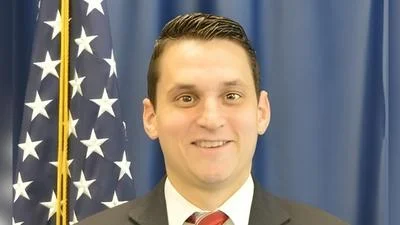The Congressional Record is a unique source of public documentation. It started in 1873, documenting nearly all the major and minor policies being discussed and debated.
“MANHATTAN PROJECT NATIONAL HISTORICAL PARK STUDY ACT” mentioning the U.S. Dept. of Energy was published in the House of Representatives section on pages H7670-H7671 on Sept. 28, 2004.
The publication is reproduced in full below:
{time} 1530
MANHATTAN PROJECT NATIONAL HISTORICAL PARK STUDY ACT
Mr. RADANOVICH. Mr. Speaker, I move to suspend the rules and pass the Senate bill (S.1687) to direct the Secretary of the Interior to conduct a study on the preservation and interpretation of the historic sites of the Manhattan Project for potential inclusion in the National Park System.
The Clerk read as follows:
S. 1687
Be it enacted by the Senate and House of Representatives of the United States of America in Congress assembled,
SECTION 1. SHORT TITLE.
This Act may be cited as the ``Manhattan Project National Historical Park Study Act''.
SEC. 2. DEFINITIONS.
In this Act:
(1) Secretary.--The term ``Secretary'' means the Secretary of the Interior.
(2) Study.--The term ``study'' means the study authorized by section 3(a).
(3) Study area.--
(A) In general.--The term ``study area'' means the historically significant sites associated with the Manhattan Project.
(B) Inclusions.--The term ``study area'' includes--
(i) Los Alamos National Laboratory and townsite in the State of New Mexico;
(ii) the Hanford Site in the State of Washington; and
(iii) Oak Ridge Reservation in the State of Tennessee.
SEC. 3. SPECIAL RESOURCE STUDY.
(a) Study.--
(1) In general.--The Secretary, in consultation with the Secretary of Energy, shall conduct a special resource study of the study area to assess the national significance, suitability, and feasibility of designating 1 or more sites within the study area as a unit of the National Park System in accordance with section 8(c) of Public Law 91-383 (16 U.S.C. 1a-5(c)).
(2) Administration.--In conducting the study, the Secretary shall--
(A) consult with interested Federal, State, tribal, and local officials, representatives of organizations, and members of the public;
(B) evaluate, in coordination with the Secretary of Energy, the compatibility of designating 1 or more sites within the study area as a unit of the National Park System with maintaining the security, productivity, and management goals of the Department of Energy and public health and safety; and
(C) consider research in existence on the date of enactment of this Act by the Department of Energy on the historical significance and feasibility of preserving and interpreting the various sites and structures in the study area.
(b) Report.--Not later than 2 years after the date on which funds are made available to carry out the study, the Secretary shall submit to Congress a report that describes the findings of the study and the conclusions and recommendations of the Secretary.
SEC. 4. AUTHORIZATION OF APPROPRIATIONS.
There are authorized to be appropriated such sums as are necessary to carry out this Act.
The SPEAKER pro tempore (Mr. Issa). Pursuant to the rule, the gentleman from California (Mr. Radanovich) and the gentlewoman from Guam (Ms. Bordallo) each will control 20 minutes.
The Chair recognizes the gentleman from California (Mr. Radanovich).
Mr. RADANOVICH. Mr. Speaker, I yield myself such time as I may consume.
Mr. Speaker, S.1687, introduced by Senator Bingaman of New Mexico, would direct the Secretary of the Interior to conduct a study on the preservation and interpretation of the historic sites of the Manhattan Project, such as Los Alamos National Laboratory in New Mexico or the Hanford site in Washington State. The gentleman from Washington (Mr. Hastings) has authored the House companion bill, H.R. 3207, and has asked us to move the Senate bill in the interest of time, and I urge adoption of the bill.
Mr. Speaker, I reserve the balance of my time.
Ms. BORDALLO. Mr. Speaker, I yield myself such time as I may consume.
Mr. Speaker, I would like to commend the sponsor of this bill, Senator Bingaman of New Mexico, and urge its favorable consideration.
Mr. HASTINGS of Washington. Mr. Speaker, as the author of the House version of the ``Manhattan Project National Historical Study Act'' I rise today to offer my support for this legislation. Senator Cantwell and I have worked together across party lines to develop this proposal because it's important to the people of Central Washington. And, because it presents a unique opportunity to share a piece of our Nation's history. I am pleased that our plan has been brought up for consideration today and I encourage my colleagues to support it.
By providing for a study of our nation's Manhattan Project Sites, we take an important first step towards the goal of making Hanford's B Reactor into a museum. This is the first step in preserving the historic B Reactor for generations to come.
In 1943, only months after Enrico Fermi first demonstrated that controlled nuclear reaction was possible, ground was broken on the B Reactor--which went on to become the first full-scale plutonium production reactor. An integral part of the Manhattan Project, B Reactor produced the plutonium for the bomb dropped on Nagasaki that helped win World War II.
From a scientific standpoint, the B Reactor is a testament to American ingenuity and innovation. From a historical standpoint it represents a part of Central Washington's past and our Nation's past that should not be forgotten. For those who didn't live through World War II--the B Reactor helps tell the story of a workforce that contributed to our Nation's defense for so many years.
Walking through the B Reactor is like catching a glimpse into the 1940's. Because it has been left largely intact, the tour gives you a very real sense of what it might have been like to work at the B Reactor.
The B Reactor Museum Association and the local community are driving forces behind this project. I share their enthusiasm for preservation of the B Reactor and I believe this proposal is a great step towards making this project a reality.
It is especially appropriate that the House consider this proposal today because the local community will be celebrating B Reactor's 60th Anniversary on October 9th. I can think of no better way to commemorate this anniversary and honor those who worked at B Reactor than approving this bill and sending it to the President's desk.
As an author of this bipartisan plan, I encourage my colleagues to support the ``Manhattan Project National Historical Study Act'' so that we can begin studying how best to share the story of the B Reactor, and the Nation's other Manhattan Project Sites with future generations.
Ms. BORDALLO. Mr. Speaker, I yield back the balance of my time.
Mr. RADANOVICH. Mr. Speaker, I yield back the balance of my time.
The SPEAKER pro tempore. The question is on the motion offered by the gentleman from California (Mr. Radanovich) that the House suspend the rules and pass the Senate bill, S. 1687.
The question was taken; and (two-thirds having voted in favor thereof) the rules were suspended and the Senate bill was passed.
A motion to reconsider was laid on the table.
____________________








